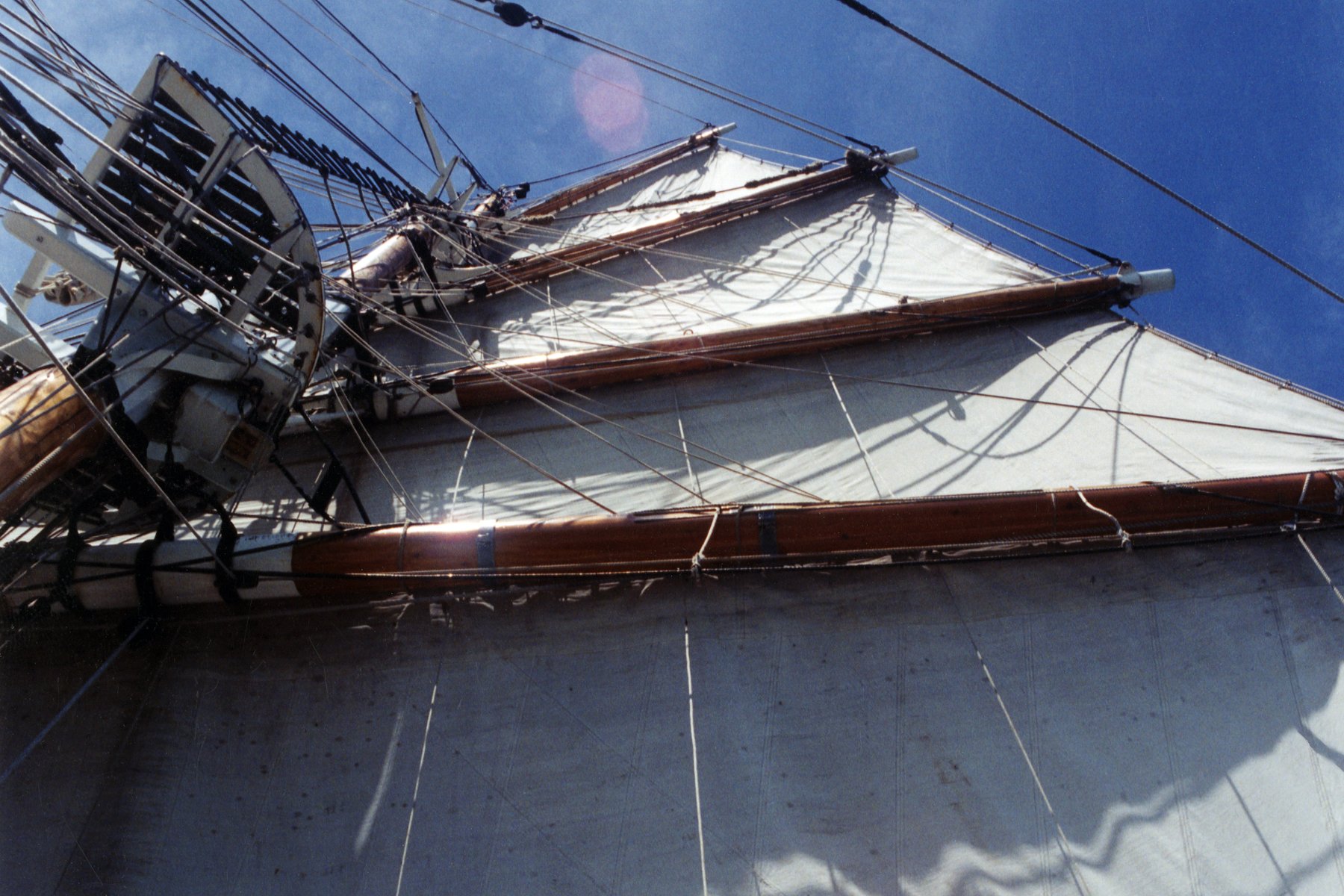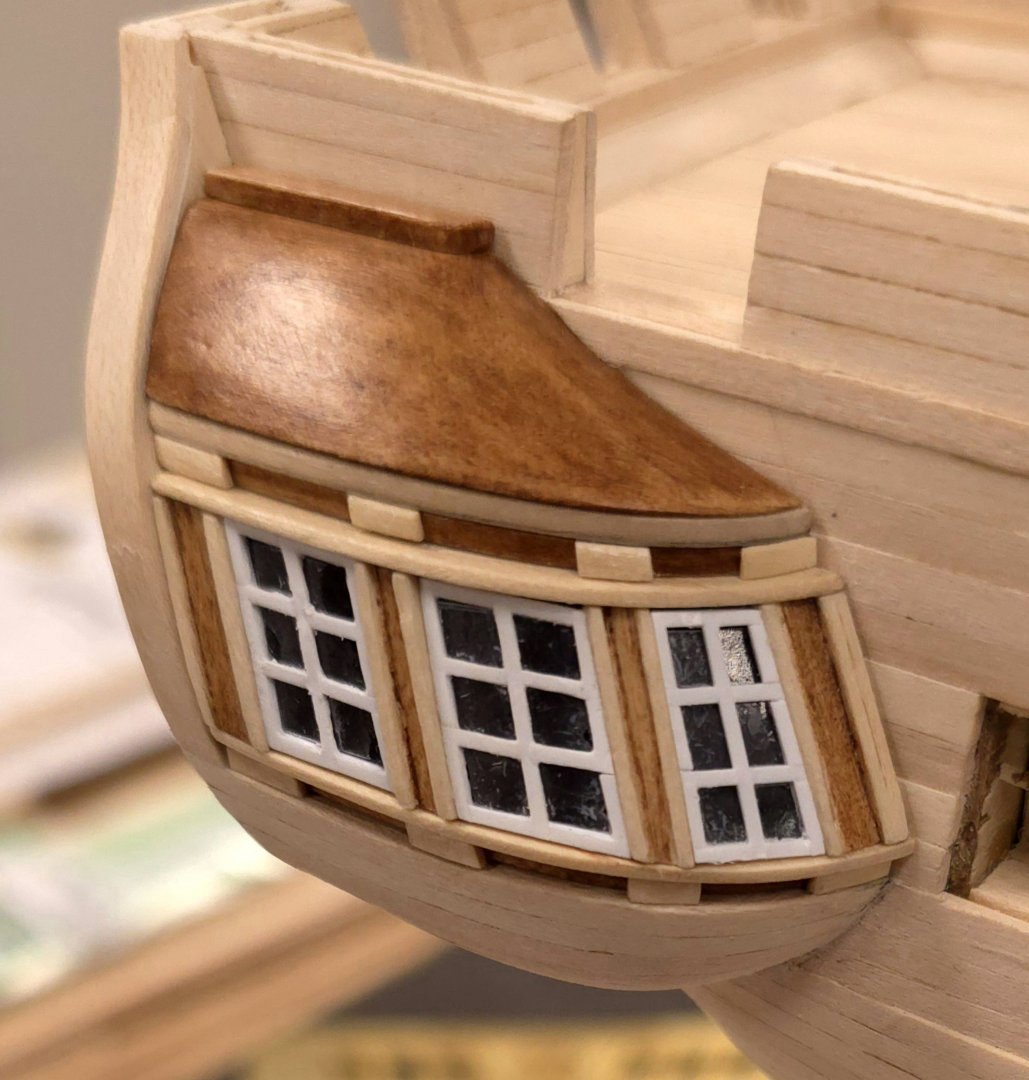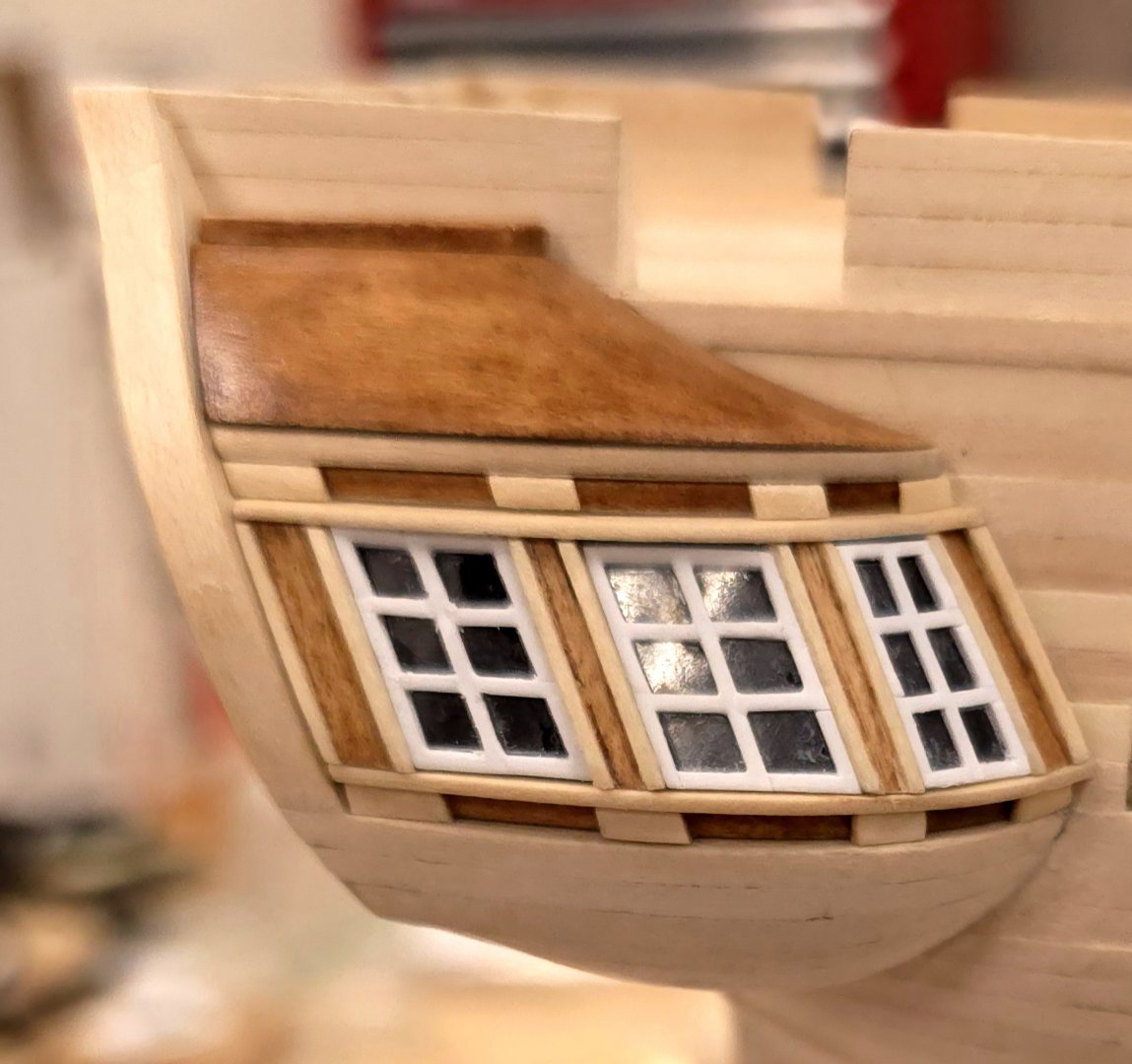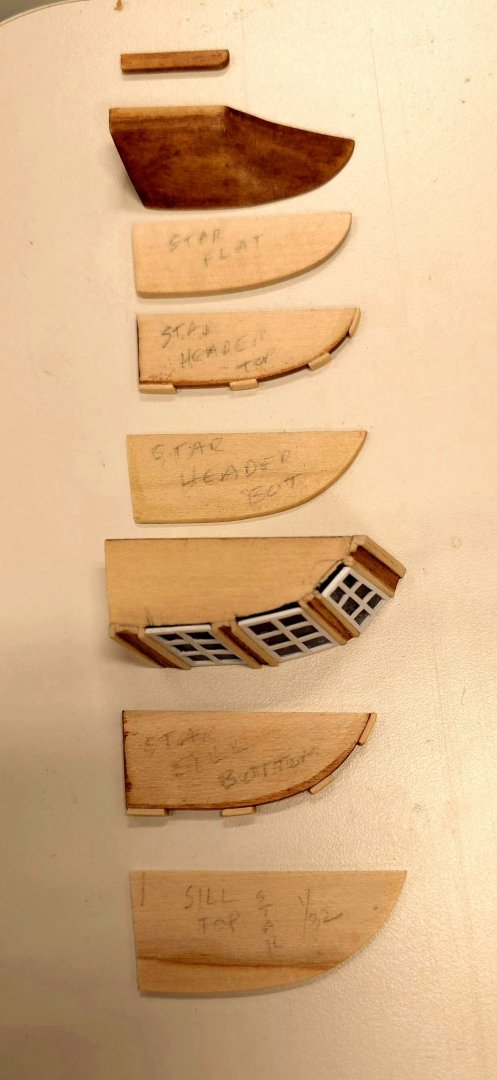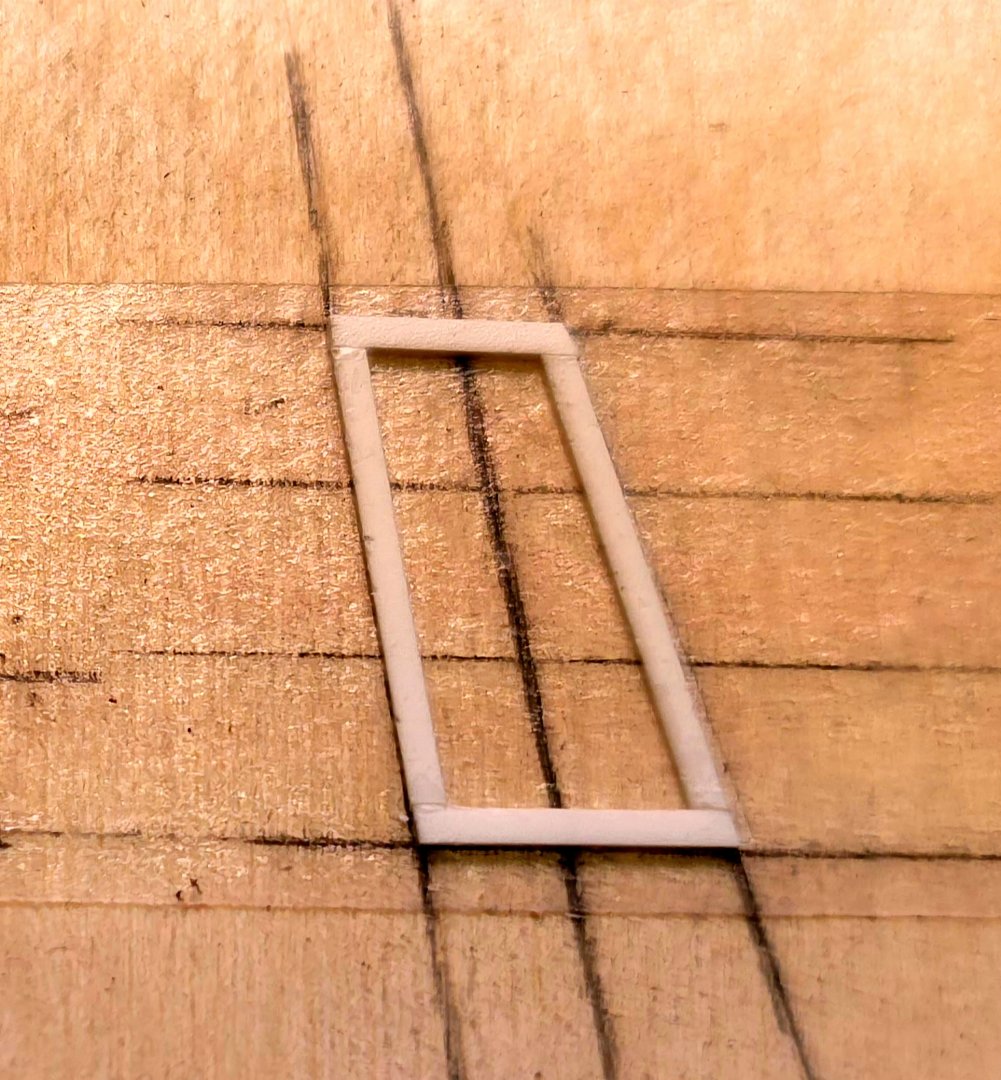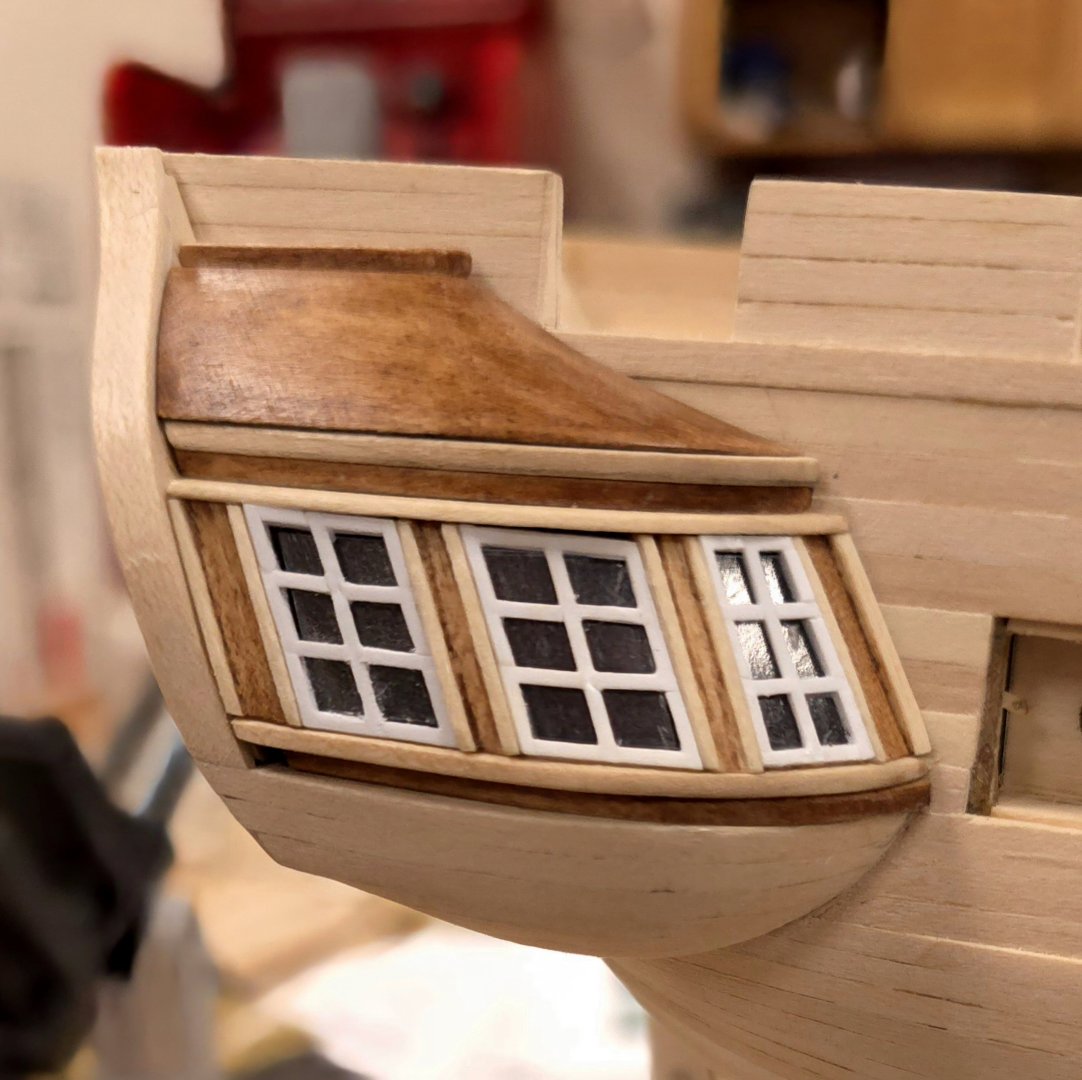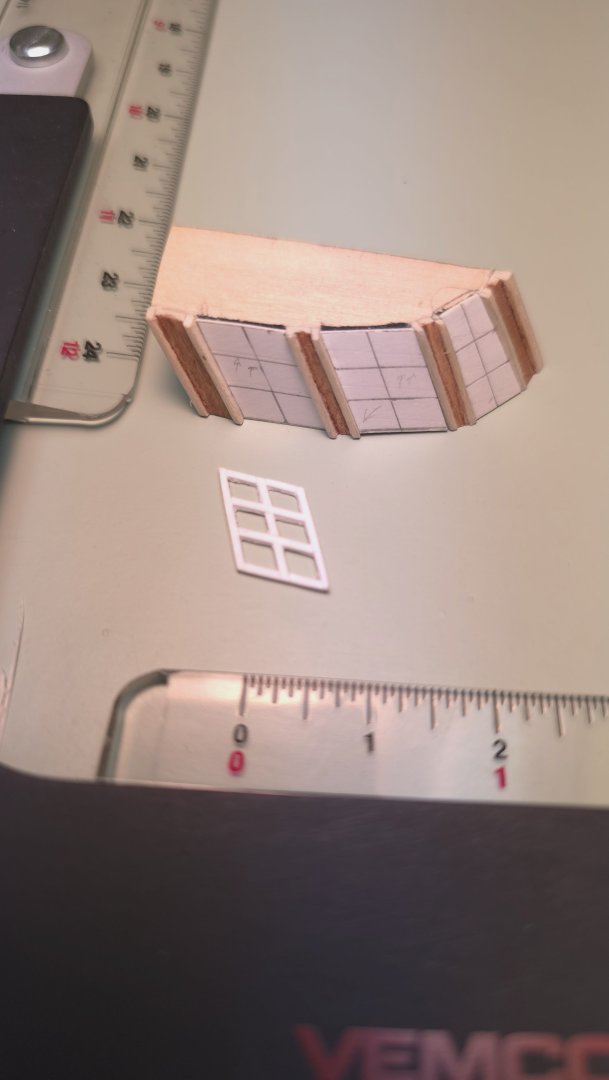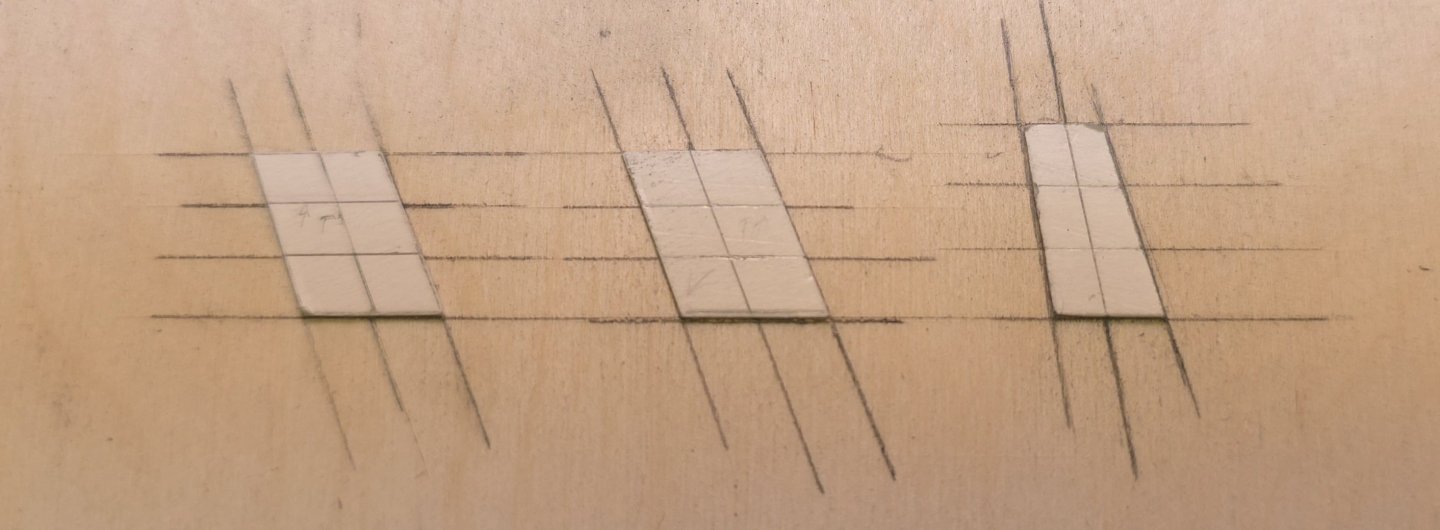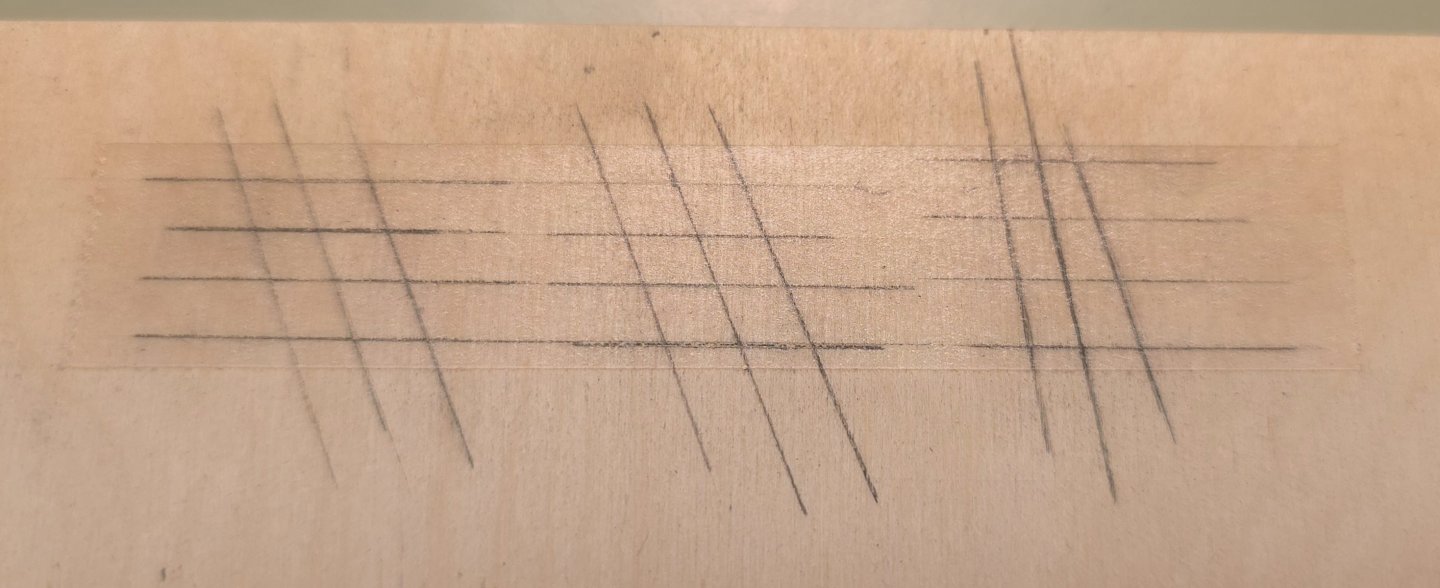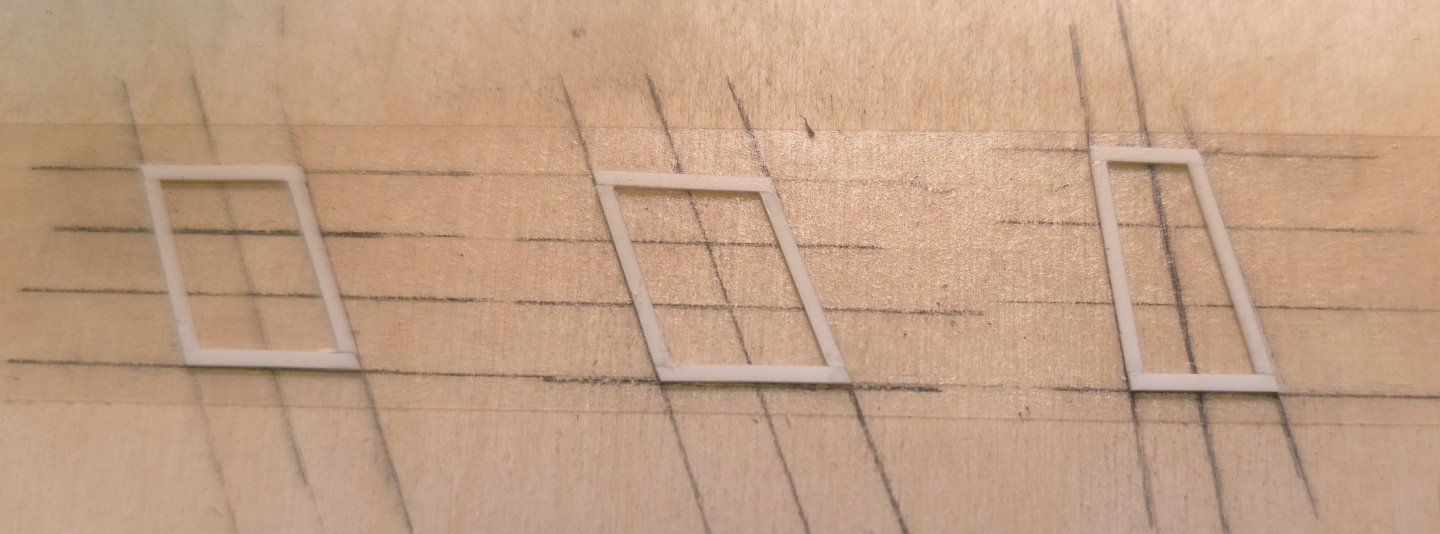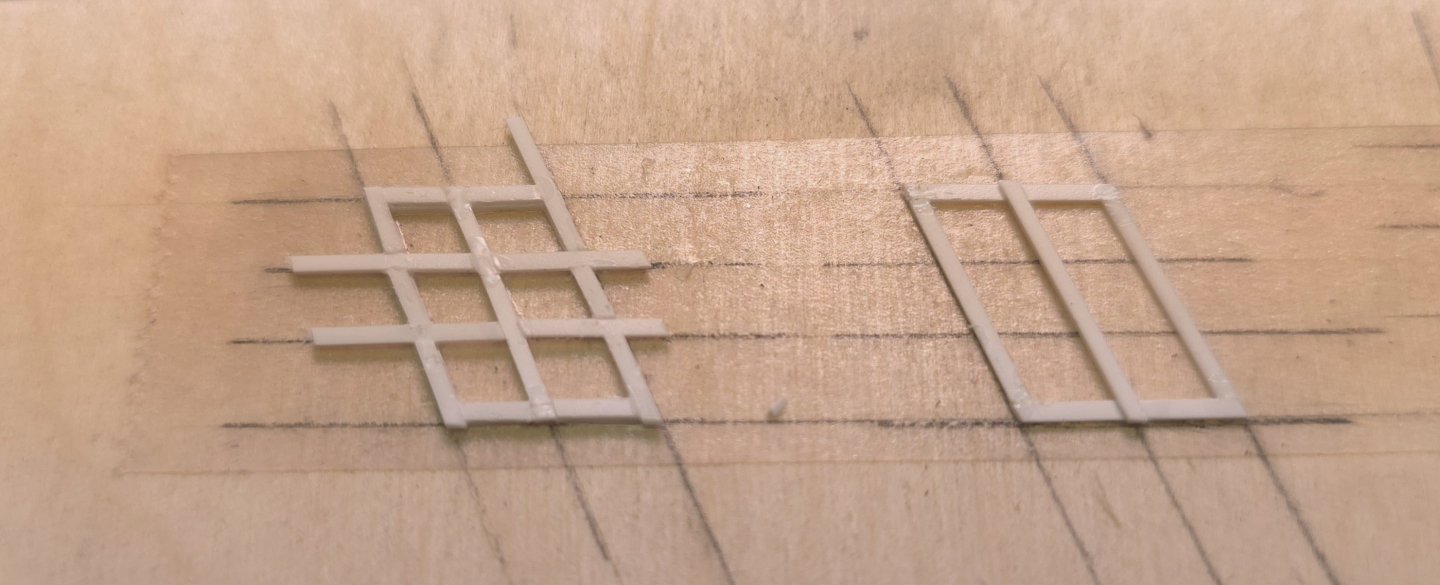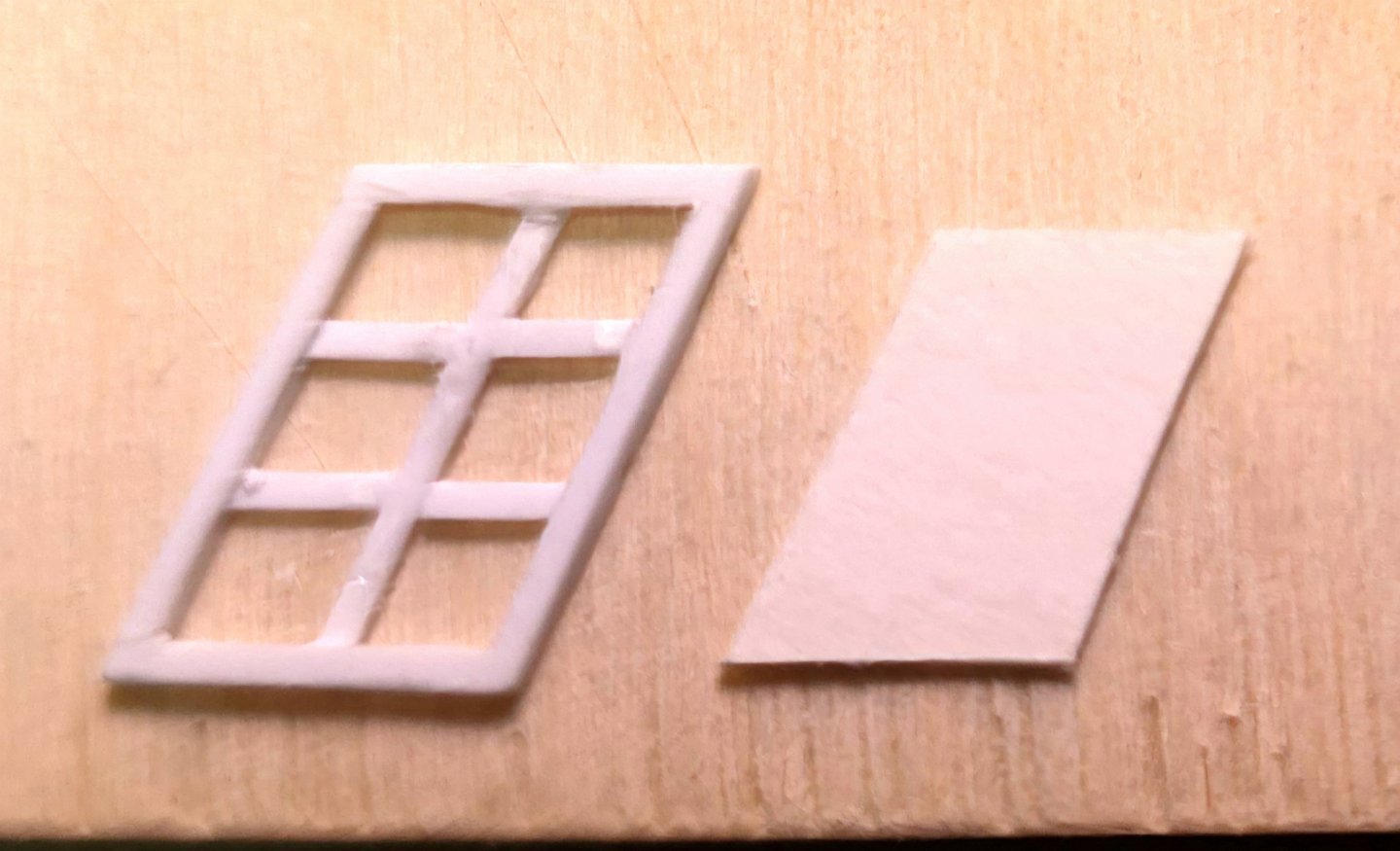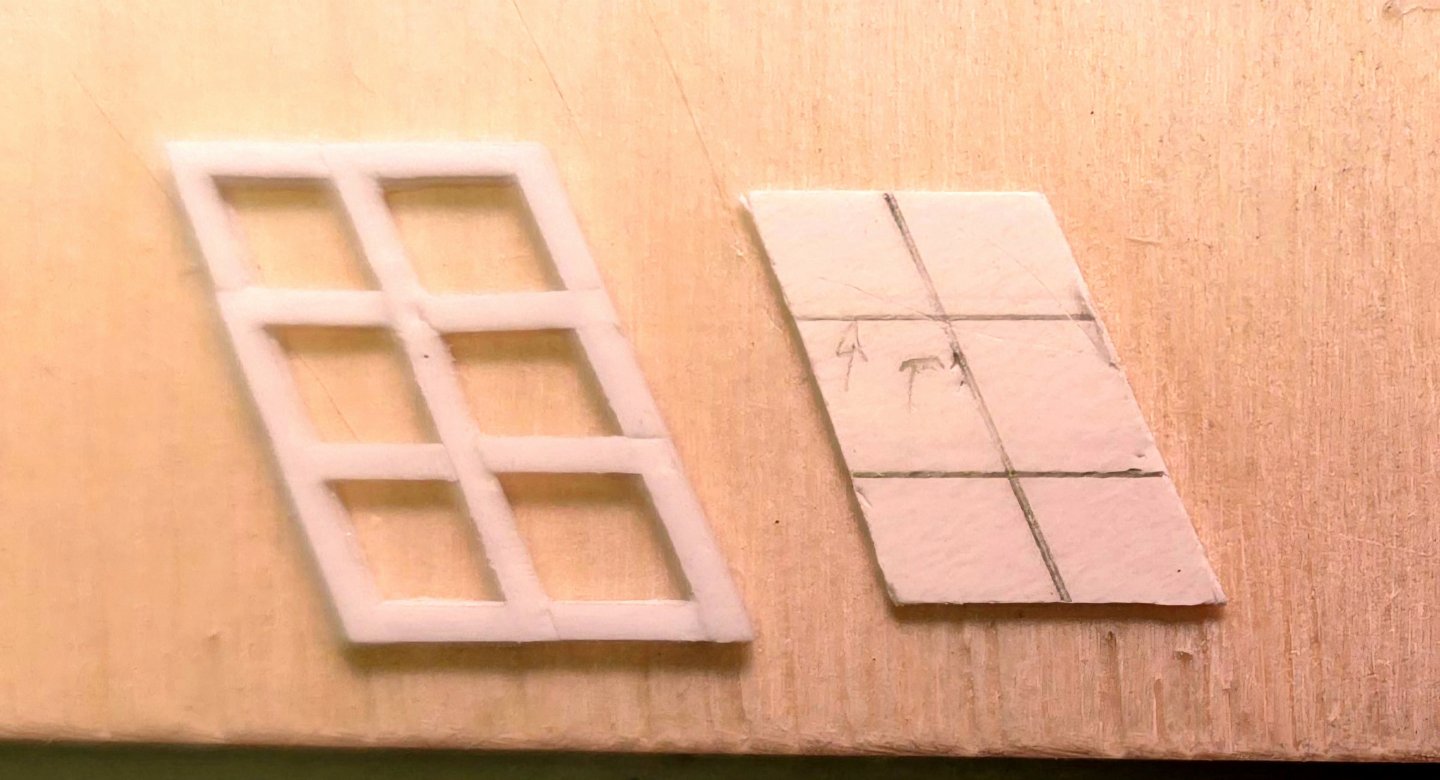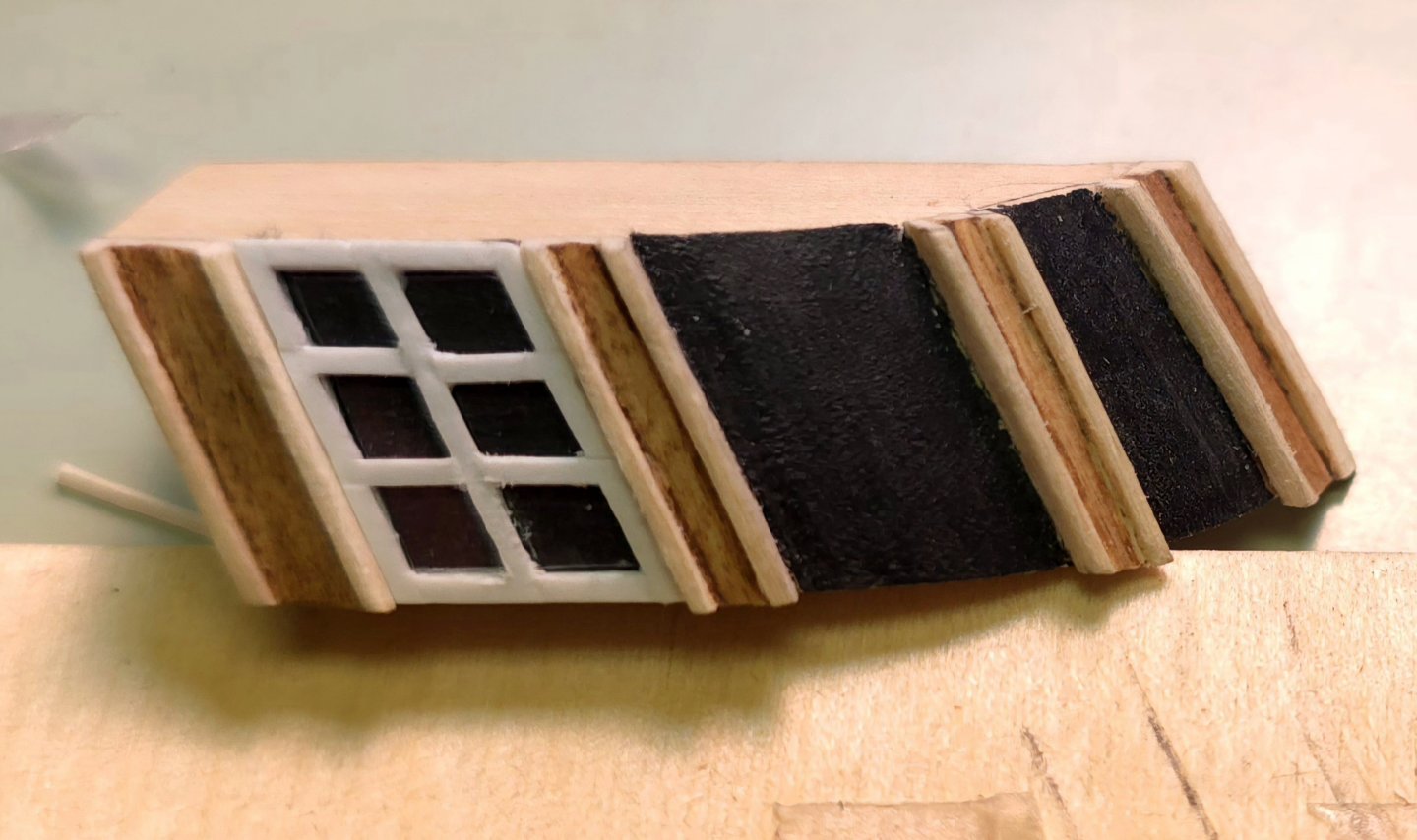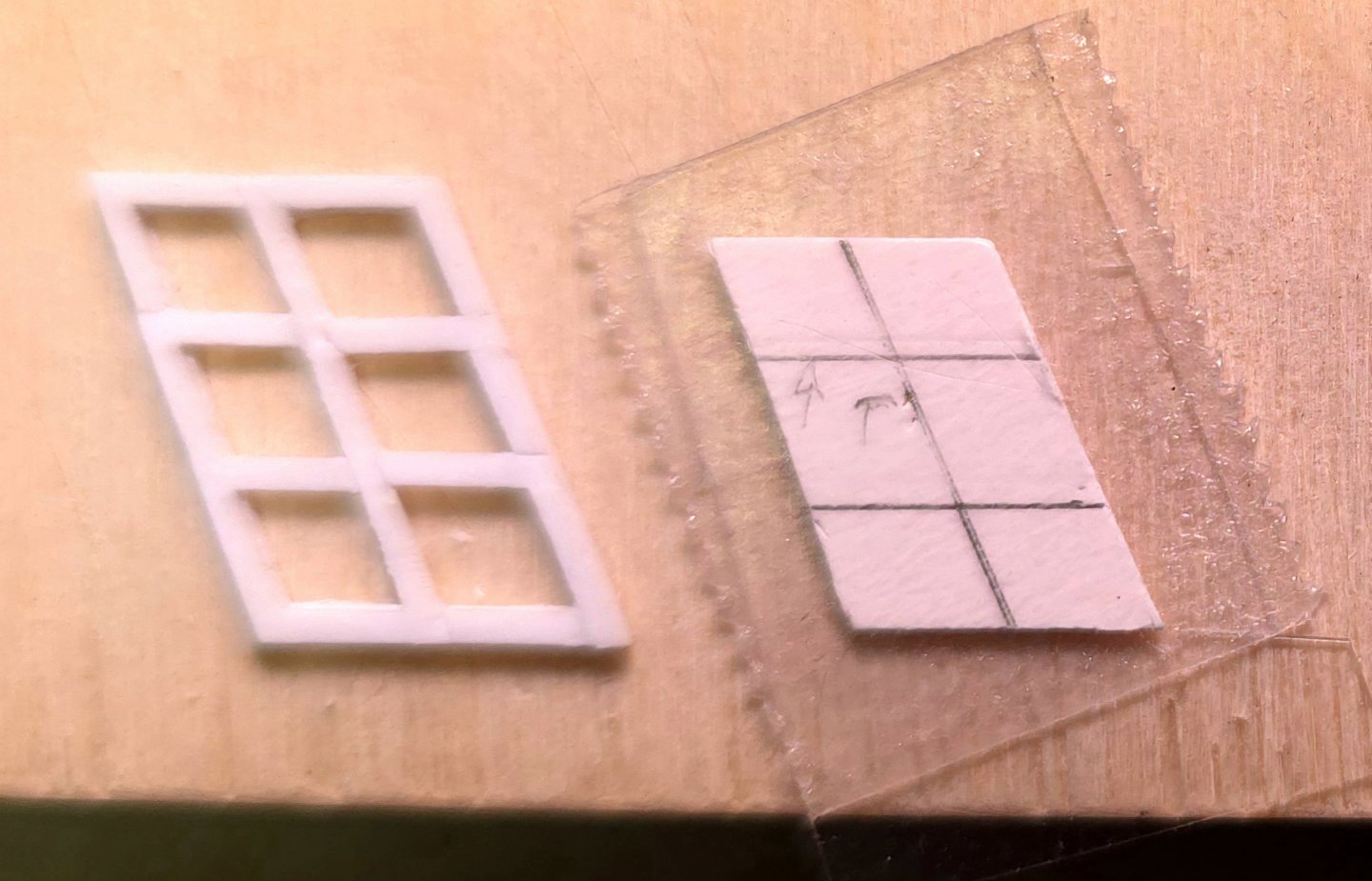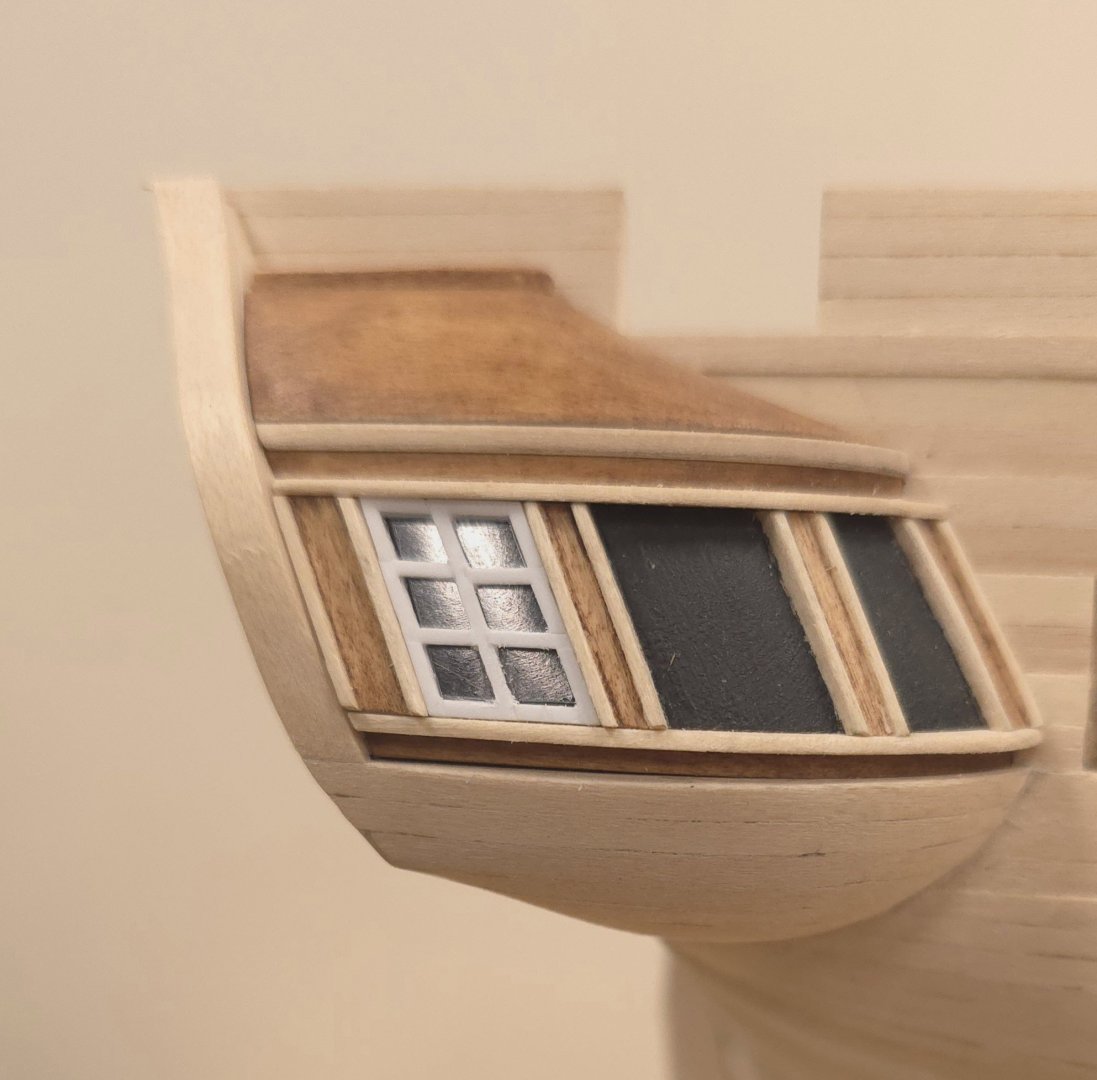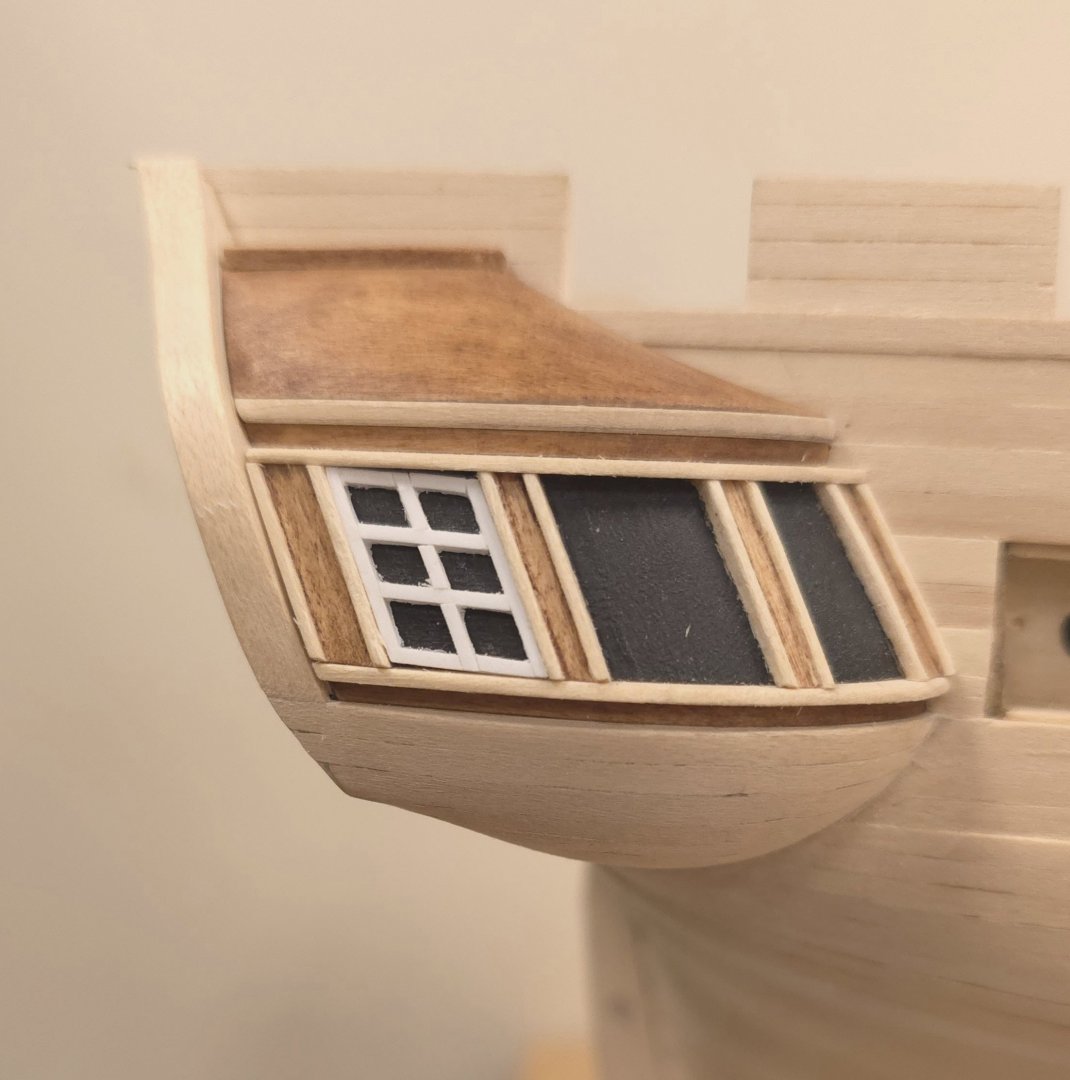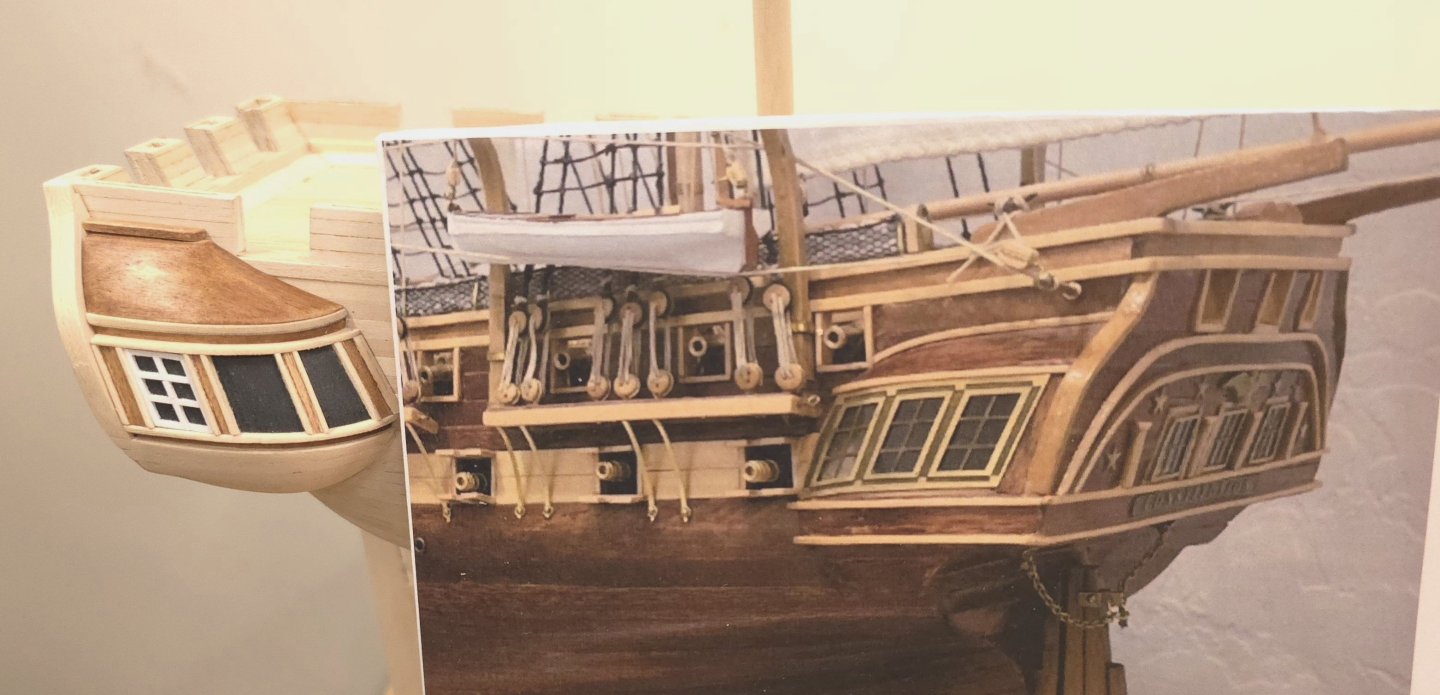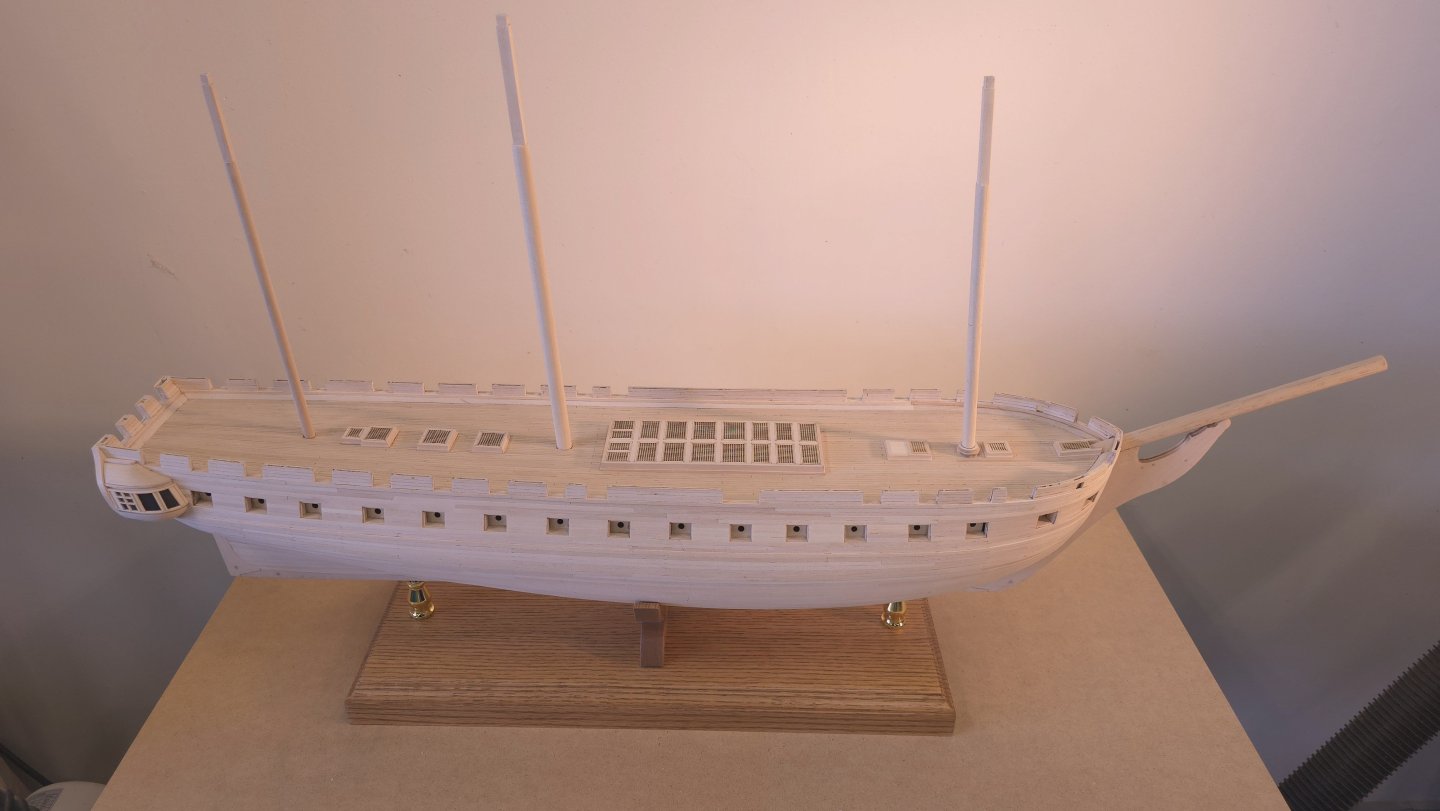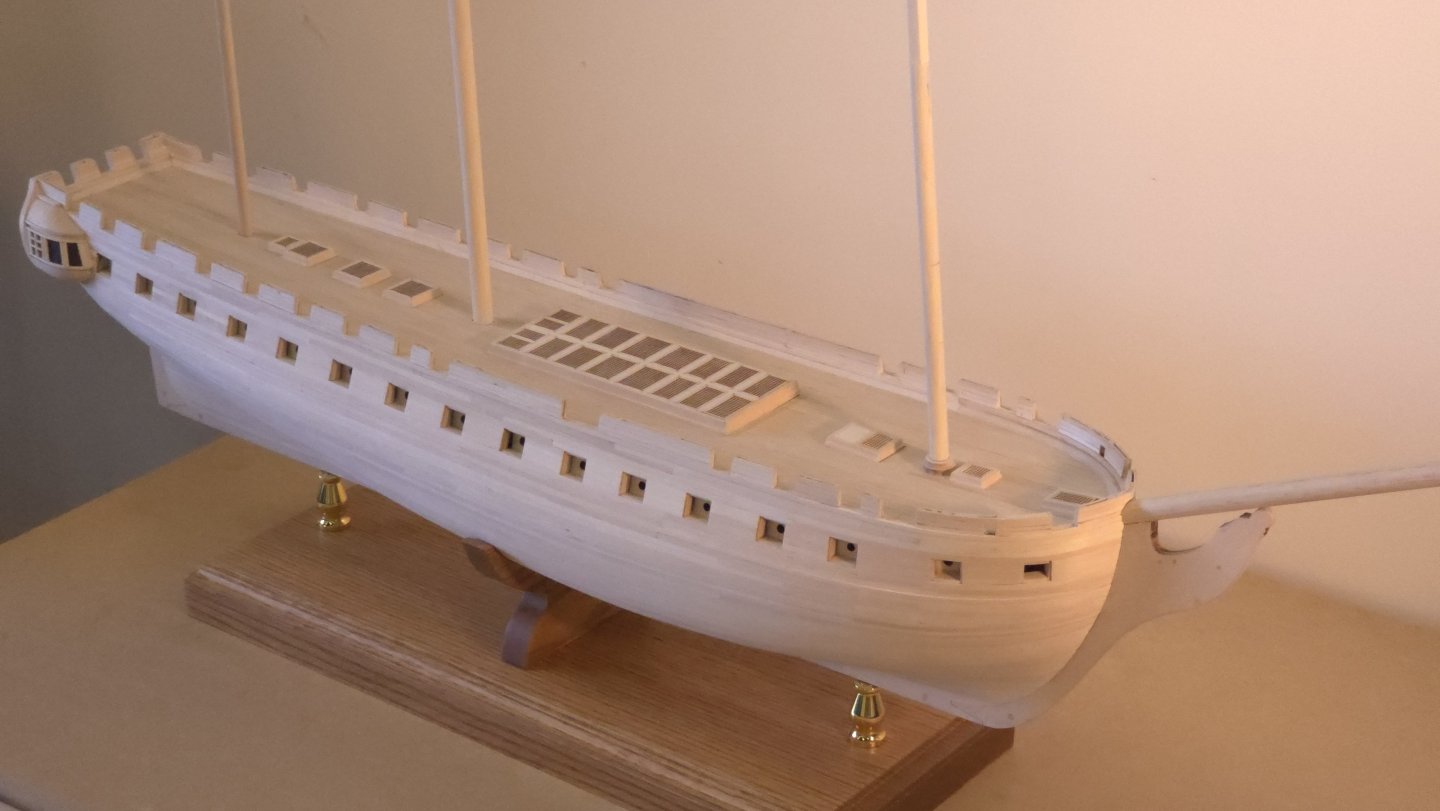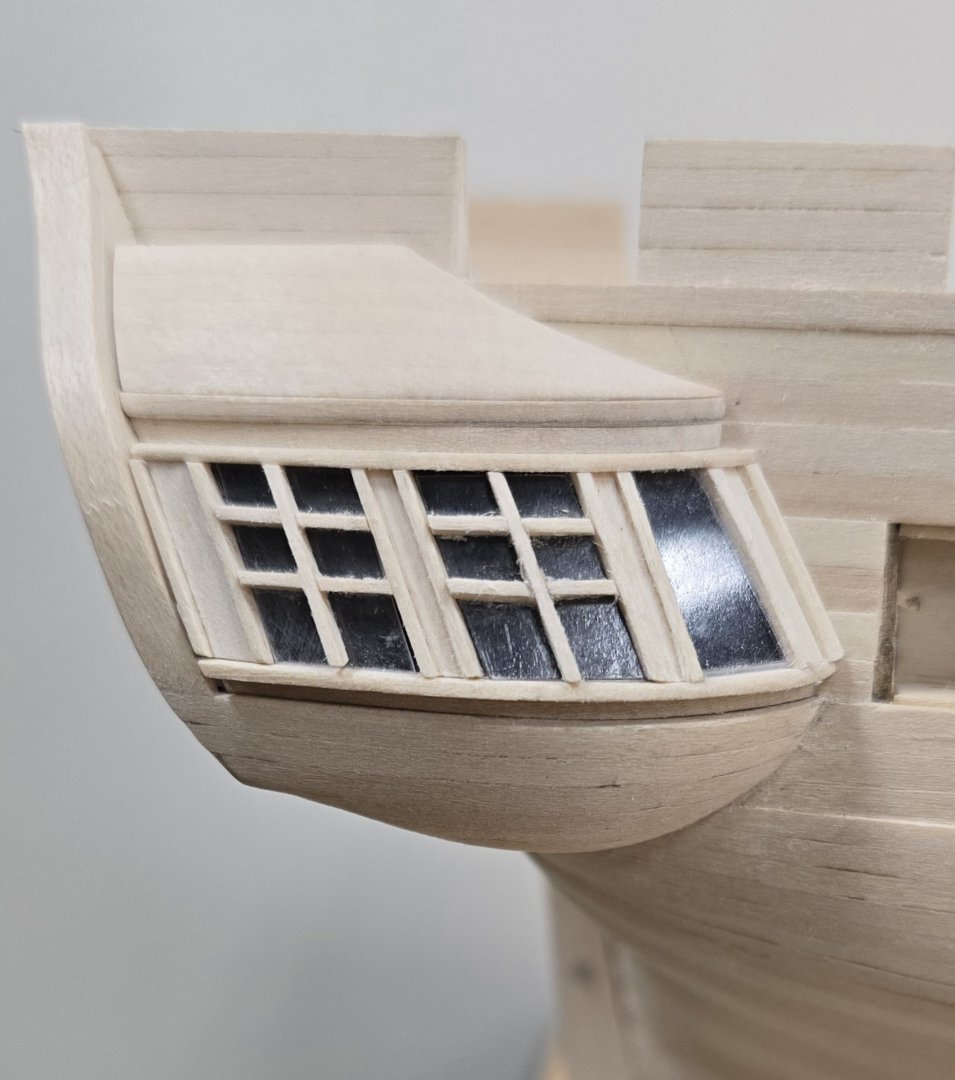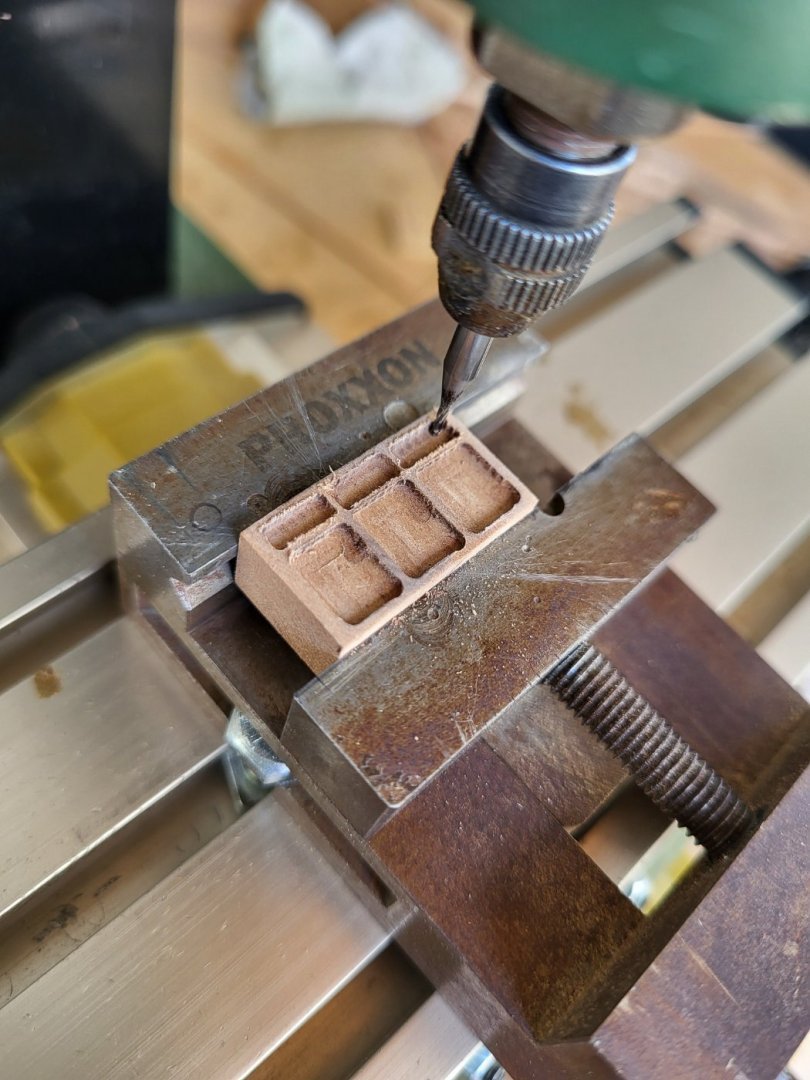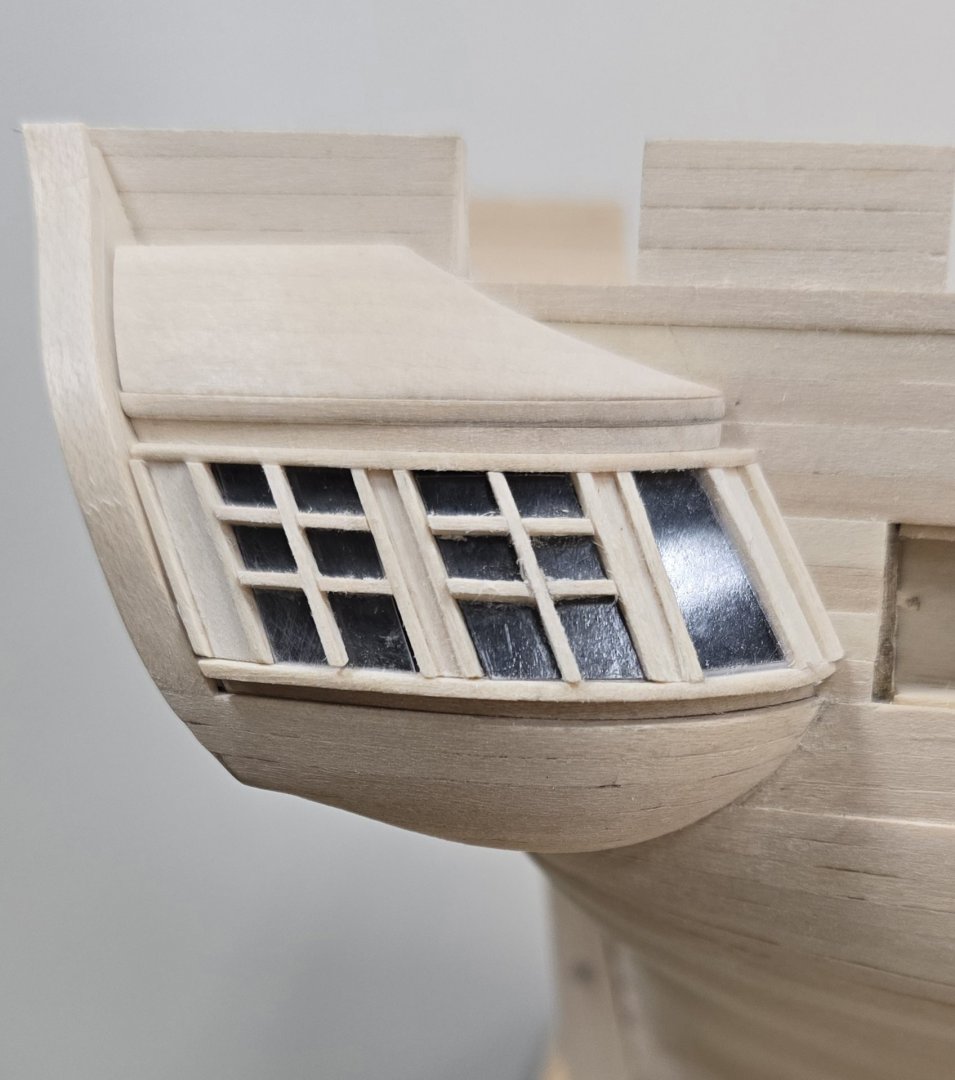-
Posts
979 -
Joined
-
Last visited
Content Type
Profiles
Forums
Gallery
Events
Everything posted by Der Alte Rentner
-
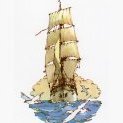
USS Constitution by mtbediz - 1:76
Der Alte Rentner replied to mtbediz's topic in - Build logs for subjects built 1751 - 1800
That is an interesting approach. Don't you risk cutting into the sills with this technique? -
Es kann sein, dass die Kanonen nicht zu hoch sind, nur dass einige von ihnen leicht nach oben geneigt sind. Vielleicht könnten Sie kleine Keile unter das innere Ende der Kanonen stecken? (translated using Translate Google)
- 210 replies
-
- San Martin
- OcCre
-
(and 1 more)
Tagged with:
-

USS Constitution by mtbediz - 1:76
Der Alte Rentner replied to mtbediz's topic in - Build logs for subjects built 1751 - 1800
I found my drum sander indispensable. I hadn't thought of employing an inclined table. That trick will be added to my tool box for future reference. Excellent suggestion. -
I'm not sure I understand. Will you be giving the ship the book? or using the picture in your presentation case? Beautiful workmanship. Sehr Schön!
- 210 replies
-
- San Martin
- OcCre
-
(and 1 more)
Tagged with:
-
A man after my own heart! Welcome aboard. I think you will find the Constitution (USS or Frigate) an interesting challenge, especially since you're opting for the 1797 edition and departing from the norm, given the overall preference here for the black and white hull painting scheme. By all means, showcase your woodworking skills! From what I see of the Pegasus above, I think you'll do splendidly. Looking forward to following your progress.
- 233 replies
-
- Model Shipways
- constitution
-
(and 5 more)
Tagged with:
-
Just a sharp xacto knife and fine tweezers. Experiment a bit with the solvent, which basically melts the styrene to form the bond. Go easy on it. Superglue will affix styrene to wood. I've tried both super glue and the solvent to attach plexiglass to the styrene. I had better results with the solvent. But again, go super easy with it and experiment a little first. I look forward to see how you fare with this. Good luck P.S. I assumed that you would know what I meant by "solvent". The Hunt Practicum specified "using Plastruct Plastic Weld solvent," in Chapter 7 page 22. Hunt states that you "touch the joints using a paint brush dipped into the solvent. Capillary action will suck the solvent into the joints and in a few minutes, fuse the pieces to each other."
-
Thank you gentlemen. Your kind words are greatly appreciated. That 3rd window proved to be a challenge, but also an opportunity. On my first pass with the styrene, I glued the center post between the bottom and the top on the frame, per the Hunt method. Doing so made fashioning a well fitting window pane more difficult than it needed to be. Because I once again screwed up (new rule, measure FOUR times, cut once), I remade that third window, this time after putting together the four edges, I fitted the glass. Then I added the upright and cross members of the frame. As a bonus, the solvent did a nice job of afixing the glass to the frame. I didn't get a picture of the process for the third window, second pass, but at this point in the process, I fitted the window pane. I made sure the 15 additional pieces of styrene covered the original butt joints. This made for a very solid window frame. I also am really becoming fond of the finish that I've chosen and, I know I'm going against the grain here but I can't help myself. One coat of clear finish has been applied to everything from the bottom sill up. Note nothing has yet been glued in place. When I do glue the window frames in, they should sit a little further back and look a tad better. I'm enjoying this photograph for today. Tomorrow I decide whether or not I'm going to add the trim above and below the pilasters or to move to the port side and come back to finish that later. (Yes, he's stalling again, trying to decide whether those trim pieces should be made out of wood or styrene. I'm leaning toward wood. 😁 ) Have a nice weekend all.
-

USS Constitution by mtbediz - 1:76
Der Alte Rentner replied to mtbediz's topic in - Build logs for subjects built 1751 - 1800
Hear hear! You are setting the standard Mustafa. Bravo! -
Having given much thought to the process of constructing the windows, I have gone back to the Bob Hunt methodology and am quite pleased with the result. I was just going to say that I had to give some thought to how I would finish the window frames. Then I realized I glued the plexiglass to the back of the frame. Either I'm going to leave the frames white, or go back and reconstruct this one, and before adding the glass on all of them, prime and paint some color approximating the natural Basswood. Practice makes perfect. Here are the steps that got me to the end result.
-
Truly a work of art. On a recent trip to Hobby Lobby to get styrene, I saw the kit for the Blue Nose on the shelf. Recalling how beautifully yours turned out, I was sorely tempted into an impulse purchase. We're I closer to finishing my Conny, I might have succumb. Congrats on a superb rendering.
- 184 replies
-
- Bluenose
- Model Shipways
-
(and 1 more)
Tagged with:
-
Close, but no cigar. Let's call this attempt a proof of concept, rather than the finished product. Styrene is very nice to work with. And yes Geoff, I am considering repeating the process using wood. I'll have to go shopping because I've got nothing this thin. Assuming I get a better result on my second try with styrene, and factoring in Jon's recommendation to paint because styrene yellows over time, maybe the next experiment would be to prime the styrene and find a paint that will approximate the color of the unstained wood used on the sill. (So far all of the gallery components are removable.) Comparison to HipExec's Constructo kit build..
-
I too thank you very much for the detailed photos. I continue to work on the galleries, and I'm getting close to. I'm finding styrene very nice to work with, but I fear that if I use it, I'll be forced to paint instead of stain. Your detailed photos are a great help in fine tuning the construction of the windows. I built the first styrene today. Sadly, it resulted in a proof of concept rather than the finished product. I'm getting close though. Thanks again.
-
Sigh, to that end I just purchased the styrene and solvent that Bob Hunt used. If I can make the windows as well as he did (a belated kudos to Bob on that score!) I may revisit the entire process. The Proxxon experiment was a fail.. I did stain the components of the galley to get a sense of how the rest of Connie would look. No pictures today. When I finish trying the windows ala B.H., I'll post both again. My daughter just arrived and my son will be here later today, so family trumps the shipyard. See you soon.
-
For me, this has been the single most difficult part of the build to date. I did experiment with the Proxxon mill, but am struggling with that as well. While, as Mustafa pointed out, I've been absent from the site for a while, I've been working the problem NON-STOP in my mind. Among other options, I've even considered trying a laser cutter or 3D printer to make the window frames. If I eventually tire of the effort, I may take a much simpler, less elegant, approach - maybe just paint lines on (or affix stickers to) the glass to fake the rails and styles of the frames. That's what HipExec's Constitution kit provided. As my extended summer draws to a close in the coming days, I'll return to the shipyard and get after it..
-
Thanks for asking. Yes, I'm fine - except for the analysis paralysis and head scratching related to those darned gallery windows. (It doesn't help that Jon pointed out that my windows are not all the same dimensions.) Last summer I spent a log of time in the shipyard, but this year, the weather and a summer full of social commitments have kept me otherwise occupied. I was reminded today that my son is coming home from college for 10 days and that my daughter will be visiting from Minnesota at the same time. So, I'll be sidelined a little longer. I see you're back from your summer vacation. Welcome back and kudos on your extraordinary build.
-
As the summer draws to a close, I am slowly returning to the shipyard. I've achieved virtually nothing in the last couple of months apart from taking these two photographs. I'm still suffering from analysis paralysis regarding the matter of paint versus no paint. But in a couple of small experiments around staining the gallery components, I'm not entirely satisfied with the results. Furthermore I'm still struggling with the gallery windows. As mentioned in a post to Mustafa, I'm on my fourth iteration on the starboard side alone. Having seen a technique he employed to fabricate a commode for his Constitution, I might try that myself to see if I can construct complete window frames. If I succeed in that endeavor, I can hollow out the area behind and achieve a more traditional result. This is where I'm at today. I'm just not happy with the windows.
-
Thank you Geoff. Among the many things I've been contemplating during my hiatus from the shipyard, taking over this project was at the bottom of the list. I haven't talked to my friend in a while, but I may yet acquire what he has, if for no other reason than to have a copy of the practicum. But I doubt I'm going to do anything with it.
-

USS Constitution by mtbediz - 1:76
Der Alte Rentner replied to mtbediz's topic in - Build logs for subjects built 1751 - 1800
My summer is nearing its conclusion. But I've been suffering from analysis paralysis, and difficulties in constructing the windows for the galleries of my Constitution. I'm on my fourth iteration for the starboard side Gallery windows and I'm still not happy with the results. I've actually been thinking about using my proxxon Mill to try to fabricate the windows. If I can figure a way to angle the Vise at the right angle, your solution for this commode may solve at least the gallery window issue for me. Gluing the window frames onto the plexiglass, is clouding and messing up the glass itself. I'm just not happy with this. I will try Mustafa's technique to construct complete window frames. Then I could hollow out the space behind and get closer to the traditional look.
About us
Modelshipworld - Advancing Ship Modeling through Research
SSL Secured
Your security is important for us so this Website is SSL-Secured
NRG Mailing Address
Nautical Research Guild
237 South Lincoln Street
Westmont IL, 60559-1917
Model Ship World ® and the MSW logo are Registered Trademarks, and belong to the Nautical Research Guild (United States Patent and Trademark Office: No. 6,929,264 & No. 6,929,274, registered Dec. 20, 2022)
Helpful Links
About the NRG
If you enjoy building ship models that are historically accurate as well as beautiful, then The Nautical Research Guild (NRG) is just right for you.
The Guild is a non-profit educational organization whose mission is to “Advance Ship Modeling Through Research”. We provide support to our members in their efforts to raise the quality of their model ships.
The Nautical Research Guild has published our world-renowned quarterly magazine, The Nautical Research Journal, since 1955. The pages of the Journal are full of articles by accomplished ship modelers who show you how they create those exquisite details on their models, and by maritime historians who show you the correct details to build. The Journal is available in both print and digital editions. Go to the NRG web site (www.thenrg.org) to download a complimentary digital copy of the Journal. The NRG also publishes plan sets, books and compilations of back issues of the Journal and the former Ships in Scale and Model Ship Builder magazines.

